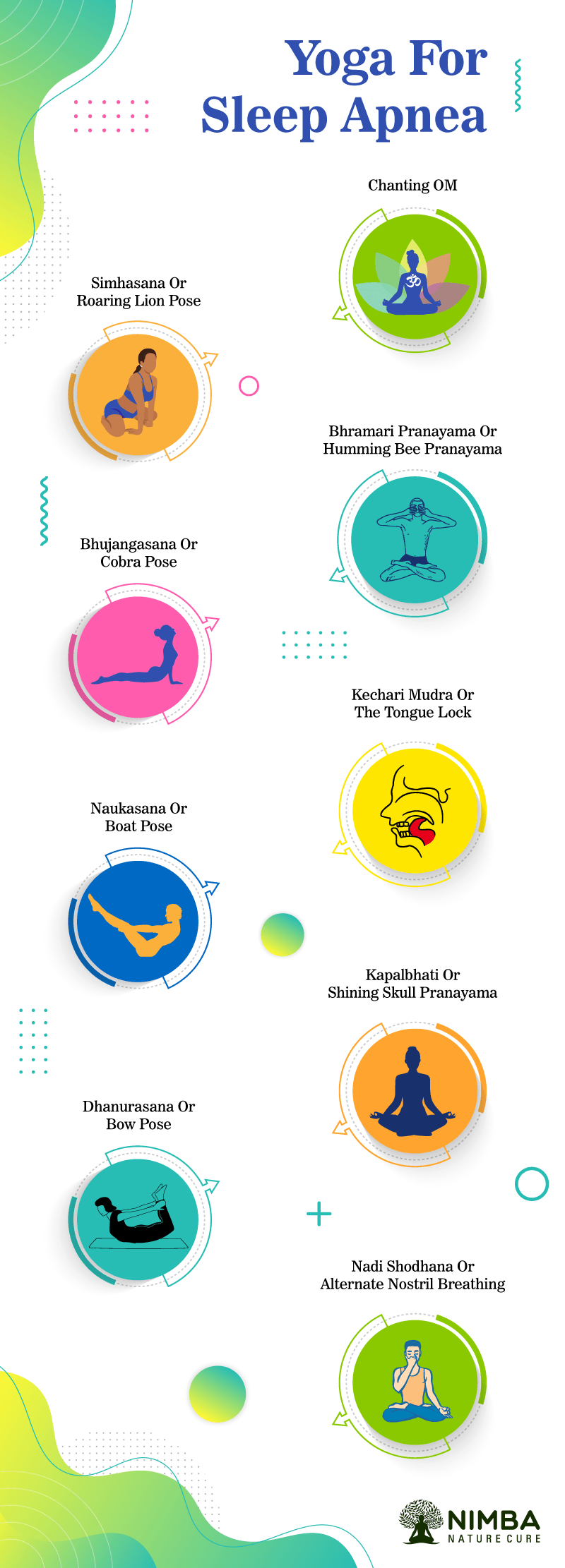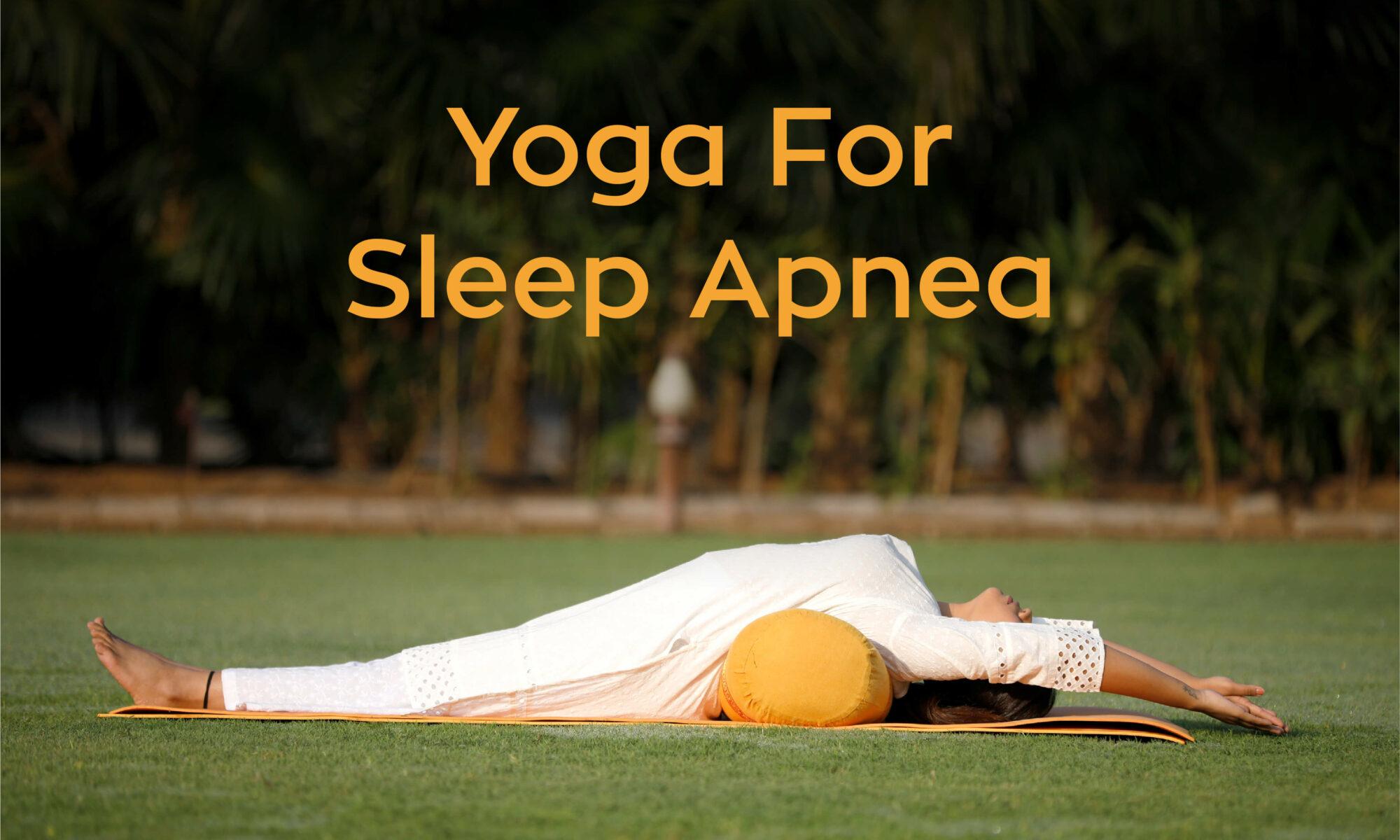Yoga for sleep apnea
By: Nimba - May 26, 2022
In this era of technology and fast-paced lifestyles, a poor lifestyle may quickly become a habit, resulting in a variety of lifestyle-related problems affecting both young and elderly people. With a lot of duties, one may begin to overthink it, which may lead to stress. What to do next, how to get to that position, what if I am not capable of meeting my family’s needs, and so on. When you go to bed, these questions and thoughts follow you. These ideas can eventually develop into a variety of disorders, which can be more stressful for you and your body. Sleep apnea is a sleeping disorder that can lead to major health issues like high blood pressure and heart difficulties. It is one of those disorders that can worsen if not addressed. There are several treatments and alternative therapies available to assist you in overcoming sleep apnea. For decades, yoga for sleep apnea has been one of the most successful practices, helping individuals in a variety of scenarios.
This blog covers sleep apnea and its symptoms, as well as how yoga has been used to treat sleep apnea.
What Exactly Is Sleep Apnea?
Sleep apnea is a severe sleep syndrome in which a person’s breathing is interrupted while sleeping. Untreated sleep apnea causes people to stop breathing periodically during the night, often hundreds of times. Sleep apnea can lead to a variety of health issues, including hypertension, stroke, cardiomyopathy, heart failure, diabetes, and heart attacks. Sleep apnea can also cause professional damage, work-related accidents, and car accidents, as well as academic failure in children and teenagers.
Sleep Apnea Symptoms
The signs and symptoms of obstructive and central sleep apnea overlap, making it difficult to distinguish between the two. The following are the most prevalent indications and symptoms of obstructive and central sleep apnea:
- Snoring is loud
- Sleep-related episodes in which you stop breathing
- During sleep, gasping for oxygen
- Awakening with a dry mouth
- Headache in the morning
- Sleeping is difficult
- Excessive drowsiness during the day
- Having trouble paying attention while awake
- Mood swings and irritability
Is It True That Yoga Helps You Sleep Better?
Yoga is a great practice whose goal is to restore balance to the body and mind. Yoga has now become a popular type of fitness all across the world, with more and more individuals rising each morning to conduct the yoga asanas.
Many individuals, particularly those in their forties and fifties, have sleep problems. According to research, yoga may not only be excellent for boosting core strength, flexibility, and psychological stress, but it may also enhance your sleep patterns. Yoga can help you fall asleep faster, sleep for longer periods of time, and return to sleep more quickly if you wake up in the middle of the night.
Does Yoga Relieve Tension, Allowing You To Sleep More Soundly?
Did you know that exercising may help you relax? Stress is a major cause of sleep deprivation. If you fall into this category, consider incorporating yoga into your daily practice from the comfort of your own bed. Yoga can also help to relieve stress and quiet the mind, resulting in a higher overall quality of life. By strengthening the upper airway muscles, rhythmic breathing can aid with sleep apnea. Although yoga breathing exercises are not a direct treatment for sleep apnea, they do assist in strengthening, toning, and opening the upper airway muscles, which can help minimize the symptoms of sleep apnea.
Yoga For Sleep Apnea
Let us start with a simple fact. Yoga cannot cure sleep problems, but it can help reduce symptoms associated with sleep apnea when used in combination with other continuing therapy approaches. Yoga can help lessen symptoms since yoga breathing techniques strengthen and tone the upper airway muscles when performed under the supervision of a certified yoga instructor. They greatly reduce stress and soothe the mind, which affects appetite, sleep quality, and the desire to live a healthier lifestyle.

Some of the asana and practices of yoga for sleep apnea include:
Chanting OM
Begin chanting the word “OM” frequently for a few minutes after closing one’s eyes and maintaining one’s breathing pattern for a few seconds. The word should be uttered twice, first with a deep OOOOO that emanates from deep within, followed by a lighter MMMM. Om sound is a type of energy composed of vibrations felt throughout the chant.
Simhasana Or Roaring Lion Pose
In this posture, one should kneel and bend backwards such that their hips rest on their heels. Palms face up in the area between the legs, fingers spread open. While maintaining your head bent back, lean forward and take a huge, relaxing breath through your nostrils. After a few seconds of holding the breath, the mouth is opened and the tongue is pushed out before expelling violently while making a loud AHHH sound. For at least a few minutes, these breaths should be repeated.
Bhramari Pranayama Or Humming Bee Pranayama
In this asana, the thumb covers the ears while the index finger rests on the forehead and the remaining three fingers rest on the base of the nose, lightly touching the eyes. Inhale deeply and hold the air for a few seconds before forcefully exhaling from the nostrils with a humming or buzzing sound like a bee. This inhale and exhale should be done entirely through the lungs, with no belly motions. It should begin with 10–12 repetitions and progressively rise to 25–30 repetitions.
Bhujangasana Or Cobra Pose
In this posture, one should kneel and bend backwards such that their hips rest on their heels. Palms face up in the region between the legs, fingers spread open. While maintaining your head tilted back, lean forward and take a huge, leisurely breath through your nostrils. After a few seconds of holding the breath, the mouth is opened and the tongue is pushed out before expelling violently while making a loud AHHH sound. These breathing exercises should be done for at least a few minutes.
Kechari Mudra Or The Tongue Lock
This is a difficult and time-consuming practice. Beginners are only required to complete the first steps. The tongue should be rolled up to make contact with the upper palate. At first, it may just be able to touch the hard palate. It might travel deeper back to touch the soft palate with experience. Later, it may come into contact with the uvula in the back of the throat. With experience, the tongue may enter the nasal cavity beyond the uvula and stimulate specific areas within the cavity. This might take months or even years of practice.
Naukasana Or Boat Pose
Naukasana is performed by lying on your back, feet together, and arms beside your body. While exhaling, the chest and feet are lifted off the ground, and the arms are stretched towards the feet. As one feels tightness in the navel area as the abdominal muscles tense, continue to breathe deeply and effortlessly while holding the position. While breathing, return to the ground gently and relax.
Kapalbhati Or Shining Skull Pranayama
The spine is held upright when performing Kapalbhati, with palms on knees facing downwards. The stomach is drawn in towards the spine as one exhales through the nose. He breathes in automatically as one loosens his stomach. The stomach should be swiftly constricted again, followed by an exhalation. The task of pushing out and drawing in air should be done by the stomach muscles. Do this at least 50 times.
Dhanurasana Or Bow Pose
A person is made to lie down on his stomach with his feet hip-width apart and his arms at his side in this asana. A person is required to take his hands backwards and grip his ankles while his knees are folded. The chest is lifted off the ground and the legs are dragged up and back while breathing in. The person should maintain a steady posture while paying attention to their breathing. Deep breathing is required when you have a curled and tight body like a bow. The legs and chest are brought to the ground after 15–20 seconds of exhaling.
Nadi Shodhana Or Alternate Nostril Breathing
In nadi shodhana, the left hand is placed on the left knee, palm towards the sky, or the thumb and index finger are pressed together. Place your first and second fingers on your right hand between your brows. Put your ring and little finger on your left nostril and your thumb on your right. Take a deep breath in and out. Exhale via your left nostril, covering the right nostril with your thumb. Inhale from your left nostril. After you’ve filled your lungs, cover your left nostril and exhale through your right nose. Breathe in via your right nostril. Perform 10 rounds of this motion in addition to your yoga programme.
Nimba Offers The Best Natural Remedies For Sleep Apnea
Nimba Nature Cure is a place to heal yourself in the middle of nature. Being surrounded by nature will cure half of your troubles. Following a comprehensive analysis of the patient profile, our professional yogi will prescribe some lifestyle adjustments and assist you with various yoga postures for sleep apnea to help you overcome it.
We mix a nutritional plan with yoga, meditation, and other activities to correct the mind-body balance for the best results. Based on the patient’s needs, botanical medications and herbal nutritional supplements are also recommended. Naturopathy and yoga for sleep apnea have helped the majority of our patients regain physical and mental strength, which helps to keep the mind in sync with pleasant thoughts and emotions.





